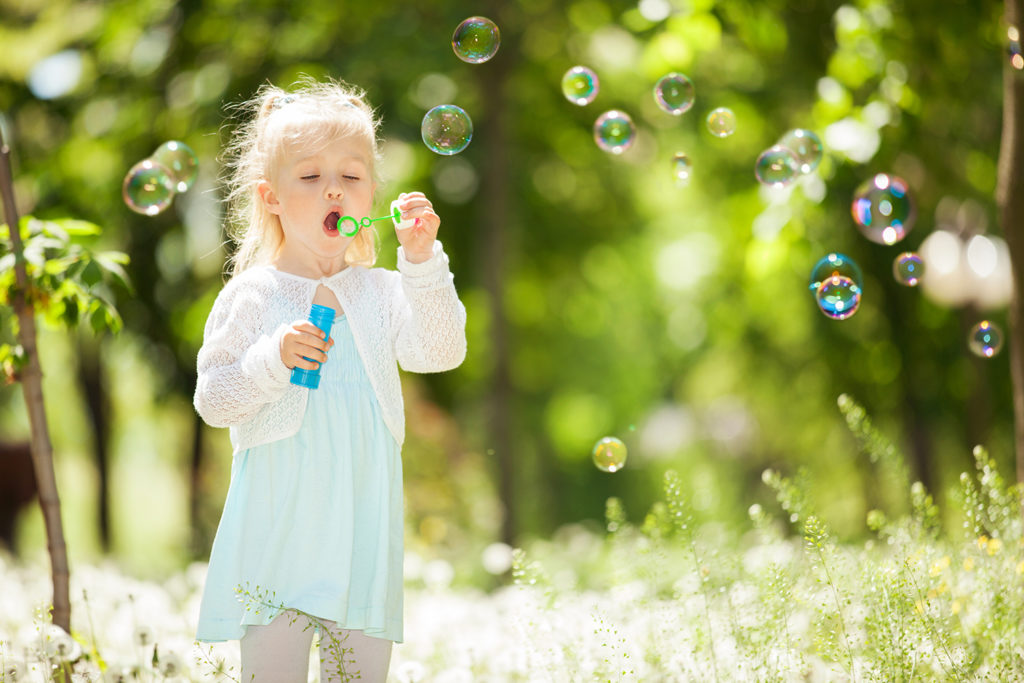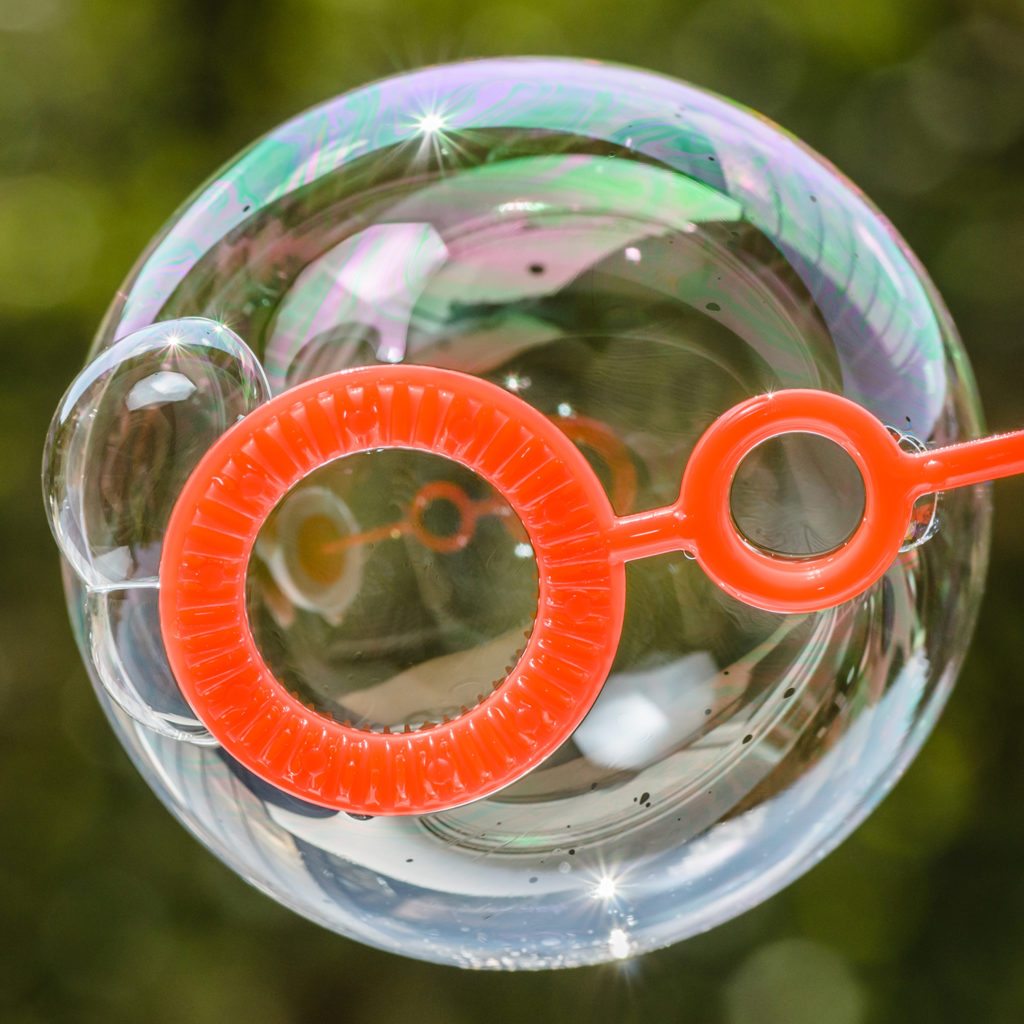Beautiful Bubbles
There is quite a level of skill and control needed to blow bubbles. Mastery of these opalescent spheres will often bring a gratifying gasp of admiration and achievement from the children.
Bubbles are a lovely way of encouraging a rich use of language. Talk about the colours. Are they the shade of a dragonfly’s wing or marbled like the inside of an abalone shell? How are they travelling? Are they gliding, twisting, soaring, floating etc? Scientific language can also be contextually utilised. Discuss how blowing air into a liquid enables the mixture to float. Ask if the bubbles are spherical, transparent or opaque. Together talk about sizes and shapes. Compare, are they the size of marbles, footballs or golf balls?
Watch the wonderment unfold as the children chase the bubbles. Provide nets and see how many they can catch. Have hoops for the bubbles to pass through and record their findings in chalk, on clipboards etc.
Conjure up imaginary stories about the bubbles’ journey. Will it travel high over chimneys, trees and mountains? Will it glide past a bird or even be viewed from a space rocket window?
The adult needs to be sensitive to when they can extend and enhance the learning and when standing back is required.
Working with the children on creating practical solutions to challenges can also be centred around bubbles. Investigate which solution works best. Test out consistencies and a variety of concoctions. Try making different bubble blowers. Hold a grand bubble bonanza where the children can judge on different criteria. Ensure you record and take lots of photographs.
There are all kinds of bubbles, from ones that can surround you to touchable bubbles that are fascinating as you can hold them on your fingers. Twirl about bubbles in the water tray. Try different soap. There’s liquid, soap flakes, hypoallergenic bubble bath etc. It’s fun as well as satisfying to use whisks, mashers and sieves to experiment and explore. Bubbles are great in the laundry and in the car wash. Bubble tubes may have a calming effect but equally inexpensive bubbles can be quite soothing.
To summarise I’d like to say, don’t underestimate the humble bubble. They are shiny jewels of potential learning experiences. It is so rewarding to hear giggles and sounds of glee as the activity unfolds. They can form a magical part of childhood as well as contributing to their knowledge and understanding. Next time you bring out the bubble solution, think about all that potential.
With thanks to Catherine Clark for writing this post. Catherine has worked in Early Years Education for many years. She is the in-house educationalist at TTS, consulting and advising on how children learn. Catherine has developed numerous award-winning products at TTS and is passionate about children having enriched, exciting learning opportunities.




